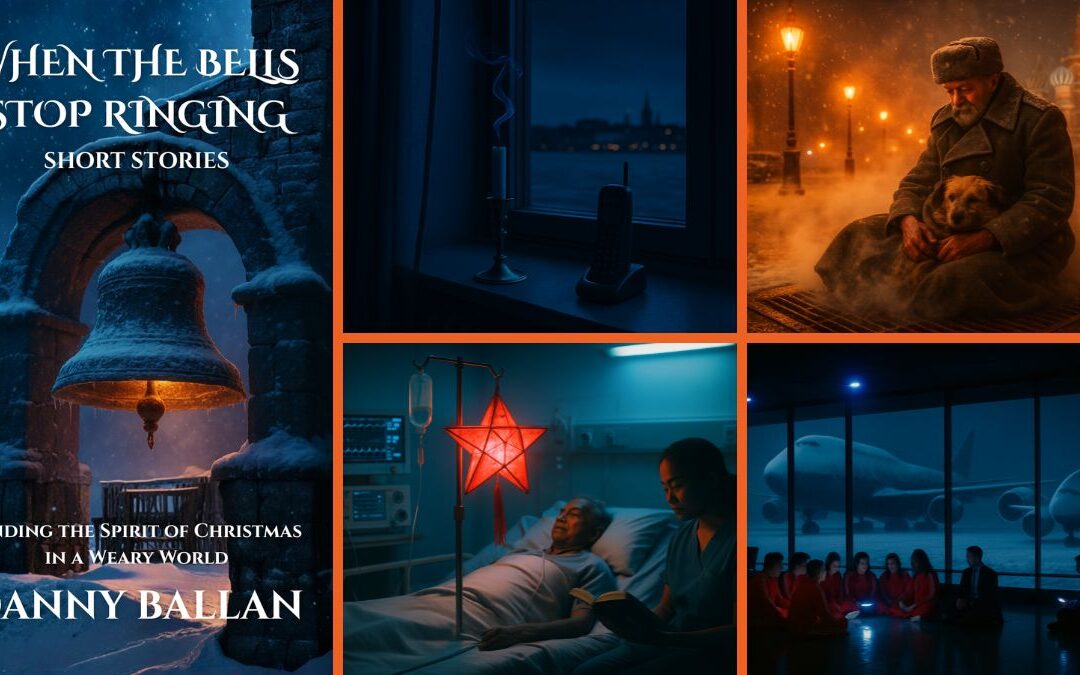The first few lines of any story hold immense power. It’s in these opening moments that readers decide whether to keep turning the pages or put the book down. Whether you’re working on a novel, a short story, or even an article, learning how to write a gripping opening is crucial for grabbing your audience’s attention and holding it. In this article, we’ll explore techniques to craft compelling openings that instantly draw readers in and make them eager to know what happens next.
Why Does the Opening Matter So Much?
Imagine walking into a bookstore, picking up a novel, and reading the first few lines. If the opening fails to intrigue you, it’s unlikely that you’ll give the rest of the story a chance. The same applies to anyone reading your work. The beginning sets the tone, introduces the mood, and gives readers a reason to invest their time and attention.
Think about how you choose what to watch on streaming platforms. Often, if the first few minutes of a movie or show don’t capture your interest, you quickly switch to something else. The same happens with books and stories. Readers are looking for a reason to continue, and a strong opening can be the hook that keeps them engaged.
The Key Elements of a Gripping Opening
- Start with Conflict or Tension
One of the most effective ways to hook readers is by starting with a scene of conflict or tension. This doesn’t mean you need to dive straight into a full-blown fight, but introducing a dilemma or hinting at a problem early on makes readers curious about the outcome. Conflict gives your story momentum right from the beginning.
In George Orwell’s 1984, the novel opens with the striking image of a clock striking thirteen. This small detail immediately unsettles the reader, signaling that something is off in this world, creating intrigue and tension.
- Introduce an Engaging Character
Readers connect with stories through characters. Introducing a protagonist who is compelling, relatable, or mysterious can be a great way to pull readers in. Your character doesn’t have to be likable, but they should be interesting enough that readers want to know what happens to them.
In J.D. Salinger’s The Catcher in the Rye, Holden Caulfield’s voice in the opening line immediately draws readers into his unique perspective. His rebellious, candid tone grabs attention, making you want to follow his journey.
- Set the Scene with Vivid Imagery
Creating a strong sense of place or atmosphere can immediately transport readers into your story. Vivid descriptions that engage the senses allow readers to visualize the setting and become immersed in the world you’re creating.
In Gabriel Garcia Marquez’s One Hundred Years of Solitude, the novel begins with a sentence describing a distant memory of an execution in front of a firing squad. The evocative imagery pulls the reader into the unique world of Macondo and piques curiosity about the story.
- Pose a Question
Starting with a question, either literal or implied, is another way to captivate your readers. By presenting a puzzle or mystery, you invite readers to seek answers, making them feel more invested in the narrative from the start.
In Daphne du Maurier’s Rebecca, the narrator opens with the famous line, “Last night I dreamt I went to Manderley again.” This opening line poses an unspoken question—why is Manderley important? What happened there? The reader is instantly drawn in, wanting to uncover the mystery.
- Use a Surprising or Shocking Statement
A shocking or unexpected statement can grab attention because it breaks the reader’s expectations. When you open with something surprising, readers are compelled to keep reading to see where the story is going.
In Toni Morrison’s Paradise, the opening line is simple but shocking: “They shoot the white girl first.” This bold statement leaves the reader with questions and sets the stage for the powerful story that follows.
- Start in the Middle of the Action
Jumping straight into an action scene can immediately energize your story. Whether it’s a chase, a heated argument, or a dramatic moment, starting in the middle of the action plunges readers right into the heart of the story.
In Homer’s The Iliad, the epic opens in the midst of a quarrel between Achilles and Agamemnon, throwing readers directly into the drama of the Trojan War.
Common Mistakes to Avoid
- Too Much Backstory
While it’s tempting to provide a lot of context and backstory upfront, this can slow down your opening and overwhelm the reader. Focus on the immediate action or conflict and weave in the backstory as the story progresses. - Clichéd Beginnings
Starting with a weather description or a character waking up is often overused and can feel stale. Try to find a more unique way to begin your story that sets it apart. - Overcomplicating the Opening
Sometimes, writers try to do too much in the opening, cramming in descriptions, characters, and exposition. Keep it simple. Focus on one or two key elements that will hook the reader and build from there.
The opening of your story is your first opportunity to make an impression. By starting with tension, an engaging character, vivid imagery, or a thought-provoking question, you can create a gripping opening that draws readers in and keeps them turning the pages.
Take a look at the opening of your current writing project. Does it grab attention right away? If not, experiment with starting in the middle of the action, introducing a conflict, or crafting a vivid scene. Remember, the first line is your invitation to the reader—make it impossible to resist.
Expand Your Vocabulary
- Gripping Opening
Meaning: An attention-grabbing start to a story or article that captivates readers and makes them want to continue reading.
In Context: A gripping opening is essential to draw readers into your story and keep them hooked from the first line.
Everyday Use: Whether you’re writing a story, a speech, or even an email, a gripping opening can make your message more engaging and impactful. - Conflict
Meaning: A struggle or problem that drives the narrative forward; can be internal (within a character) or external (between characters or forces).
In Context: Starting with conflict immediately engages readers by making them curious about how the problem will be resolved.
Everyday Use: You might use the word “conflict” to describe tension in a conversation or a disagreement between friends or colleagues. - Tension
Meaning: A feeling of suspense or unease that keeps readers invested in the story, often caused by conflict or uncertainty.
In Context: Building tension in the opening makes readers want to continue to see how the situation unfolds.
Everyday Use: Tension can arise in everyday situations, such as waiting for the results of a test or anticipating the outcome of a difficult conversation. - Characterization
Meaning: The process of revealing a character’s personality, traits, and motivations through their actions, dialogue, and thoughts.
In Context: A strong opening introduces key elements of characterization, giving readers insight into the protagonist’s personality.
Everyday Use: In conversation, we often characterize people by the way they behave, speak, or respond to situations. - Imagery
Meaning: Descriptive language that appeals to the senses, helping readers visualize scenes, characters, or actions.
In Context: Vivid imagery in the opening allows readers to picture the setting and feel immersed in the story.
Everyday Use: You might use imagery when describing a beautiful sunset or a bustling city street to help someone imagine the scene. - Tone
Meaning: The overall mood or attitude conveyed by the writer, which influences how the reader feels about the story.
In Context: The tone of your opening can be serious, playful, mysterious, or tense, depending on the atmosphere you want to create.
Everyday Use: You set the tone of a conversation through your choice of words and how you express yourself—whether formal, casual, or humorous. - Protagonist
Meaning: The main character in a story, whose journey or conflict drives the narrative forward.
In Context: Introducing the protagonist in an engaging way helps readers connect with the character from the beginning.
Everyday Use: In discussions, we often talk about the protagonist of a movie or book as the “hero” or main focus of the plot. - Backstory
Meaning: The background information about characters, settings, or events that occurred before the main story begins.
In Context: Too much backstory in the opening can slow down the narrative, so it’s best to weave it in gradually.
Everyday Use: We use backstory to explain someone’s history or the context of an event, such as why a person behaves a certain way based on their past experiences. - Exposition
Meaning: The part of a story that provides necessary background information, such as the setting or characters’ circumstances.
In Context: Effective exposition in the opening should be subtle, giving readers just enough information to understand the story without overwhelming them.
Everyday Use: Exposition is used in everyday life when explaining a situation or providing background information before making a point. - Narrative Momentum
Meaning: The forward drive of a story, propelled by conflict, tension, and action, which keeps readers engaged.
In Context: A gripping opening creates narrative momentum by starting with action or intrigue, making readers eager to see what happens next.
Everyday Use: In real life, momentum can describe progress in a project or activity—once you gain momentum, things move faster and more smoothly.
Let’s Talk
- When you think of a gripping opening from a book or movie you love, what made it so compelling? Was it the character, the setting, or the conflict that pulled you in?
- How important is conflict in storytelling? Can you think of a time when a story lacked conflict and felt less engaging as a result?
- Think about how you use tone in your own writing or conversations. How do you adjust your tone to match the mood of the situation?
- When reading a story, do you prefer learning about a character’s backstory gradually, or do you like getting all the details up front? How does this affect your connection to the story?
- In what ways can tension be used effectively in everyday communication? Have you ever created tension on purpose to keep someone’s attention during a conversation or presentation?
- How do you build momentum in your daily tasks or projects? What strategies help you maintain focus and keep things moving forward?
- Can you recall an opening that posed a question or introduced a mystery that kept you reading? How did it make you feel, and why did it work so well?
- Do you ever find yourself judging a story by its opening? If a book or article doesn’t grab you in the first few lines, how quickly do you decide whether to keep reading?
- If you were writing your own gripping opening, how would you start? What elements (conflict, character, setting) would you focus on to hook readers right away?
Feel free to think about these questions and discuss them with friends, family, or in the comments section. A strong opening can make or break a story, and understanding how to craft one will help you engage your audience from the very first line.










0 Comments